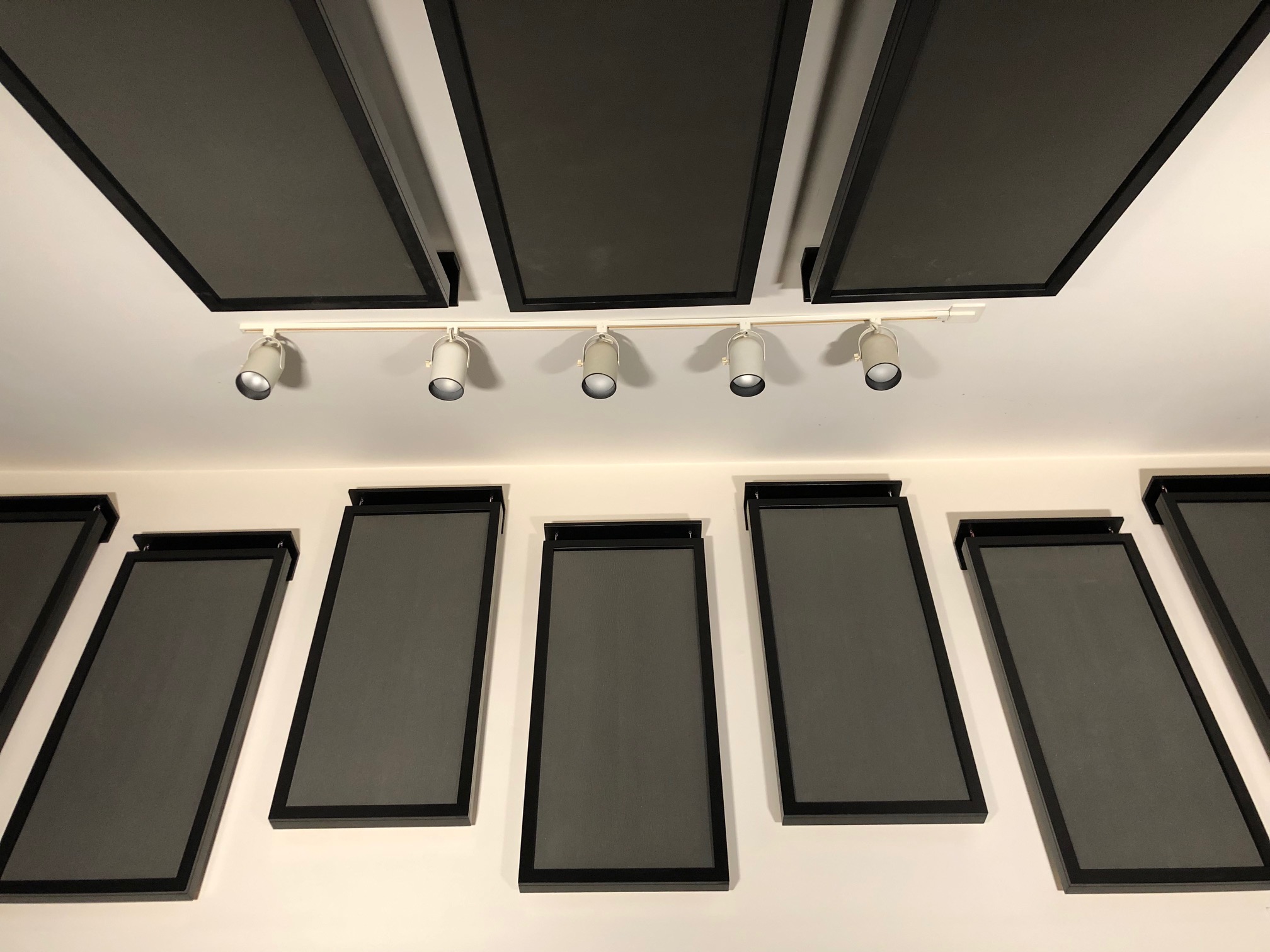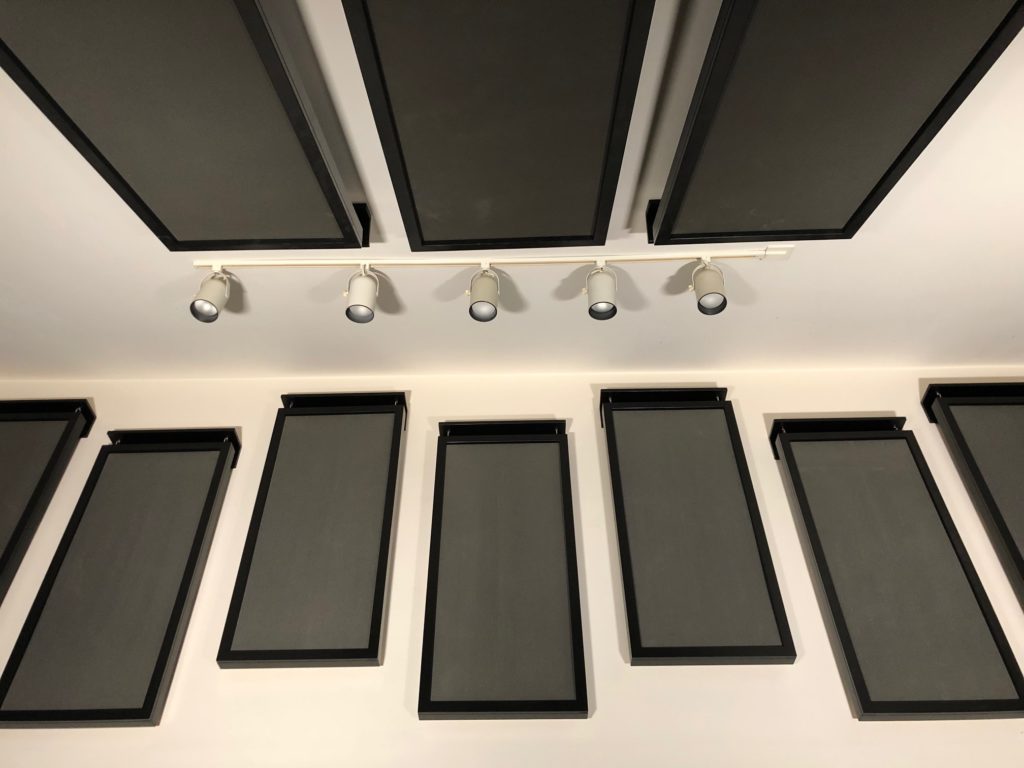
Drop ceiling panels can come in many forms. You can have drop ceiling panels that are absorption or you can have drop ceiling panels that deal with diffusion. Drop ceiling panels can not be used for lower frequency management in the floor to ceiling dimension due to their weight. Drop ceiling panels are a middle and high frequency tool that can be both absorption and diffusion. One of the most common types of drop ceiling panels is a 1/2″ thick layer of pressed board with small holes within it. It is manufactured by Armstrong. It is a panel that fits into the aluminum frame structure of a dropped ceiling. From an acoustical standpoint when it comes to absorption it is a poor performer. It is not to be used in any critical listening room application.
https://www.armstrongceilings.com/residential/en-us/suspended-ceiling-systems/drop-ceiling-tiles.html
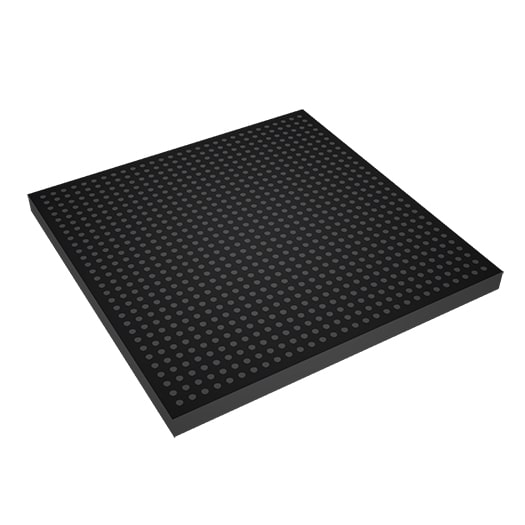
In our critical listening rooms, we have three sound fields of energy that we must be concerned with. https://en.wikipedia.org/wiki/Room_modes. We have the sidewall to sidewall issues along with the front wall to rear wall. The final issue is the floor to ceiling. The floor to ceiling dimension is usually the smallest in most rooms. The smallest dimension produces the largest low-frequency pressure issues. A tile that is only 1/2″ thick will not be able to manage any low frequency issues. It is a tool to absorb middle and high frequency issues. Drop ceiling panels are used for two purposes. First, they cover up pipes and wiring that runs through the ceiling area. They are also used to manage the reflections from the ceiling area which in turn lowers reverberation times.
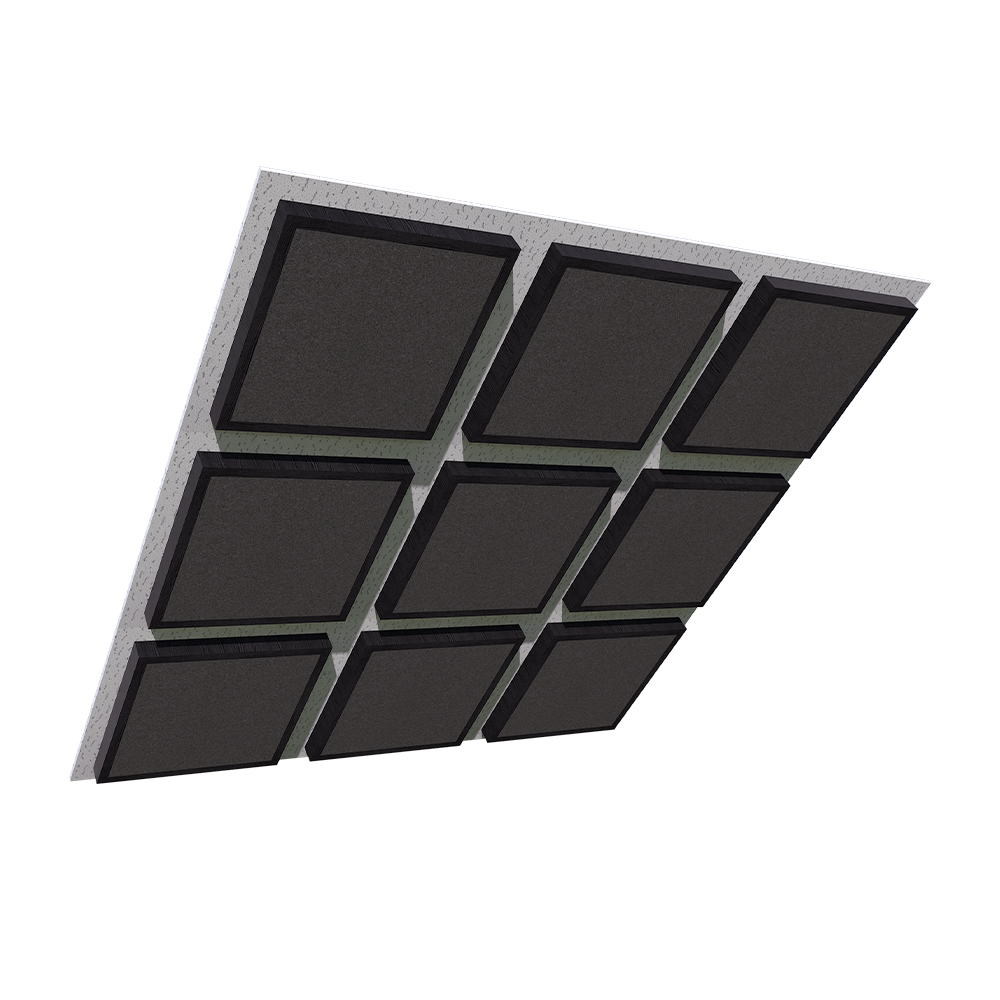
Reverberation is a measure of how long a sound stays around within the room after it has been sung, spoken, or played. Reverberation is not echo. Echo is a repeating signal over distance. Reverberation refers to the reflections that accumulate from the hard surfaces of the room. Every surface within the room contributes around 17% to the overall reverberation time within the room. The size of the room, the room usage, along with the material types within the room all contribute to high reverberation times. When reverb times are too high, they impact speech intelligibility rates and levels. Speech intelligibility times are how many words in a 10 word sentence can you hear clearly and understand. Reverberation times that are high blur and smear speech making it difficult to understand the majority of the words within a sentence. https://www.sciencedirect.com/topics/engineering/reverberation-time.
In order to treat reverb times within a room, you must cover at least 50% of each wall surface area. The wall is the offender and we must cover at least 50% of the offending surface area. Absorption is the chosen technology to use since we need to reduce the strength of the reflection. The only way to reduce the strength is to absorb part of the reflected energy. Less energy and we lower the reverb times within the room and improve speech intelligibility so we hear more in our rooms. It will not be good enough to just treat the ceiling with any type of drop ceiling panel. You must use an absorption technology that has a higher rate and level of absorption than any drop ceiling panels that are 1/2″ thick. You must not only use the correct material type but apply enough of it across multiple surface areas. To achieve an audible impact in most rooms with high reverb times we need to treat at a minimum of 2 surfaces. The room size, volume, and usage will determine how many surface areas that we will need to treat.
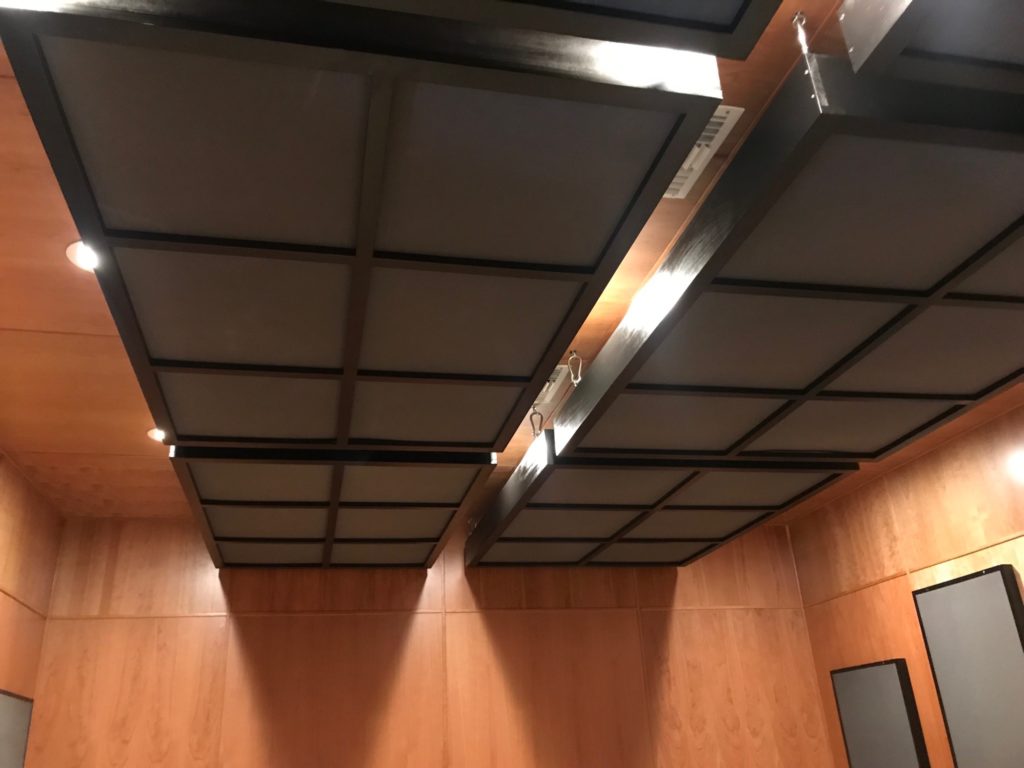
At Acoustic Fields, we have two panel types that can be used depending on the frequency and amplitude of the acoustical issues within the room. For rooms that have a frequency issue between the floor and ceiling that begins at 90 Hz., we have our perforated absorber. It is designed to fit with the grid of a drop ceiling system. https://www.acousticfields.com/product/ceiling-perforated-panel-cpp/ Units are available in 24″ x 24″ and 24″ x 48″ sizes. For ceiling systems that are concerned with absorption above 125 Hz., we have our Foam Ceiling Tiles. These are our proprietary foam technology that we use in professional recording studios mounted to a ceiling panel that will insert within the frame of a drop ceiling panel system. Combinations of both treatment types can also be used. Every room is different and analysis is necessary with each product type.
https://www.acousticfields.com/product/suspended-ceiling-foam-tile/


